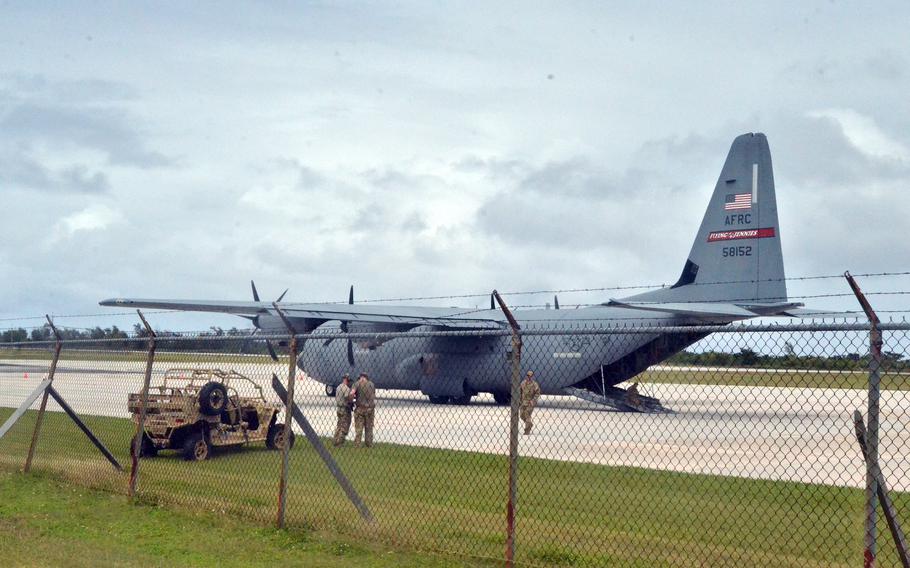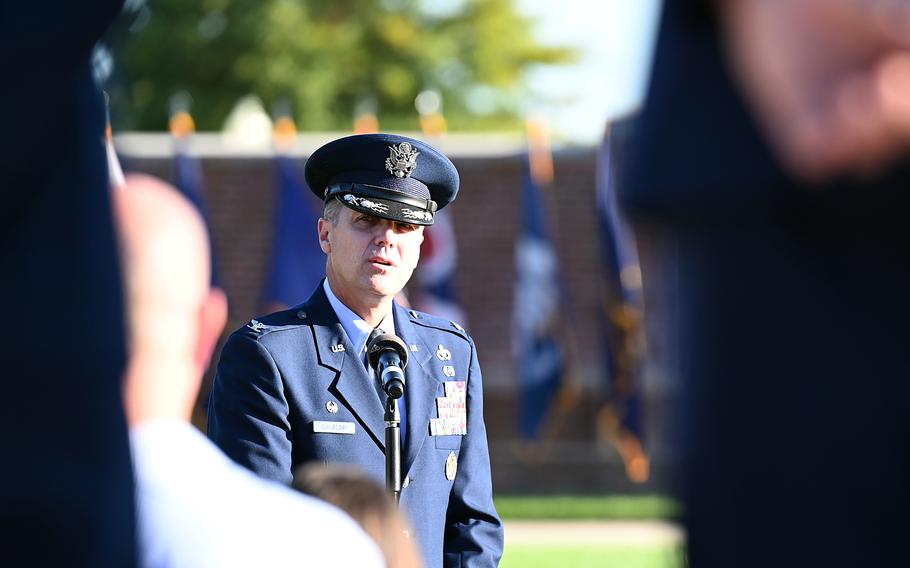
An Air Force C-130J Super Hercules visits the island of Rota during Cope North training on Feb. 18, 2020. (Seth Robson/Stars and Stripes)
The Air Force plans to increase the number of bases it can operate from in the Indo-Pacific so that it can disperse forces in wartime, according to a general responsible for logistics and force protection.
Air Force bases in the region “will grow in increments that are visible through time, across probably [10 to 15 years] as we work through that,” Brig. Gen. Michael Zuhlsdorf, deputy director of resource integration for engineering, logistics and force protection, said Tuesday during a webinar hosted by the Mitchell Institute, a nonpartisan aerospace research organization in Arlington, Va.
Zuhlsdorf didn’t respond directly to a reporter’s question about how many additional bases the force could operate from.
“The overall number is continuing to change based on the resourcing that we have … there's a number of different airfields that we're working through, and based on the resourcing, that number will shift,” he said.
World War II-era airfields throughout the Pacific provide available real estate, Zuhlsdorf said.
“We’re going to capitalize in investing in that and bringing some of those … bases to life,” he said. “We’re going to bring to life some mothballed bases that are out there.”

Air Force Brig. Gen. Mike Zuhlsdorf, then a colonel commanding the 11th Wing at Joint Base Anacostia-Bolling in Washington, D.C., speaks at a 9/11 memorial ceremony on Sept. 10, 2021. (Kayla White/U.S. Air Force)
The Air Force will team with allies and partners such as Australia, New Zealand, Great Britain, the Philippines and Japan in the effort, the general said.
“The bottom line with this resilient basing … we need to make sure that we set the theater so that our airman, soldiers, sailors, Marines … the guardians that will be out front … are taken care of and have the tools they need to succeed in that kind of an environment, frankly an environment that we haven’t been challenged with for quite a long time,” he said.
Lacking a peer threat in recent decades, the Air Force has focused on efficiency and concentrated forces at large, established bases, Zuhlsdorf said.
“We have not had that threat that is now present with our near peers, whether that’s [China] or Russia or whoever it is that’s out there,” he said. “We’ve concentrated a lot of resources in some specific bases.”
The plan is to build robust infrastructure to support Agile Combat Employment, he said. ACE is the ability to move aircraft rapidly to a network of smaller airfields to avoid being targeted by missiles in the event of war.
Meanwhile, the Air Force is looking at ways to make established bases more resilient, such as improved missile defense, camouflage and dispersing forces on those bases, Zuhlsdorf said.
“We need to bolster the existing bases that we have, from a facilities and infrastructure and command-and-control and air base air defense perspective,” he said.